The global marketing attribution software market is set to grow by 14.4% to USD 3.6 billion by 2023. However the industry is in a state of upheaval, as marketers move to more privacy-friendly solutions in the wake of limits to tracking imposed by Apple, the European Union and others.
Marketing attribution is defined as identification of a set of user actions that contribute to a desired outcome, and then the assignment of a value to each of these events” according to the IAB. There are many distinct measurement methods used by marketers to attribute the performance of their campaigns, from multi-touch digital attribution to marketing mix modeling. Many marketers use multiple methods, and there are thousands of confusing and costly options out there to choose from.
In this guide we’ll nominate the best marketing attribution software for each of the 8 attribution methods in the Attribution Stack which have a well-defined software market. You don’t need a long list of competitors to search through, just the best tool for the job. To make these choices we brought together all of the attribution experts at Recast, who made their choices based on decades of experience in the marketing attribution industry. In each section you’ll learn what each vendor does, what they’re known for, and one alternative solution for comparison.
1. Marketing Mix Modeling
Invented in the 1960s as a way to match spikes and dips in sales to marketing activity, this method is seeing a resurgence thanks to modern techniques like Bayesian MMM, and because it doesn’t require user-level data. It works across every channel (even offline channels) but can require significant data science resources if you don’t use a software vendor to automate it.
Recast (getrecast.com)
Of course we’d pick ourselves for this category – we work at Recast because we genuinely believe it’s the best solution on the market. One of Recast’s founders built the marketing science team at Harry’s, the men’s shaving brand, where it became obvious how important good marketing attribution was as DTC brands matured and decreased their reliance on Facebook.
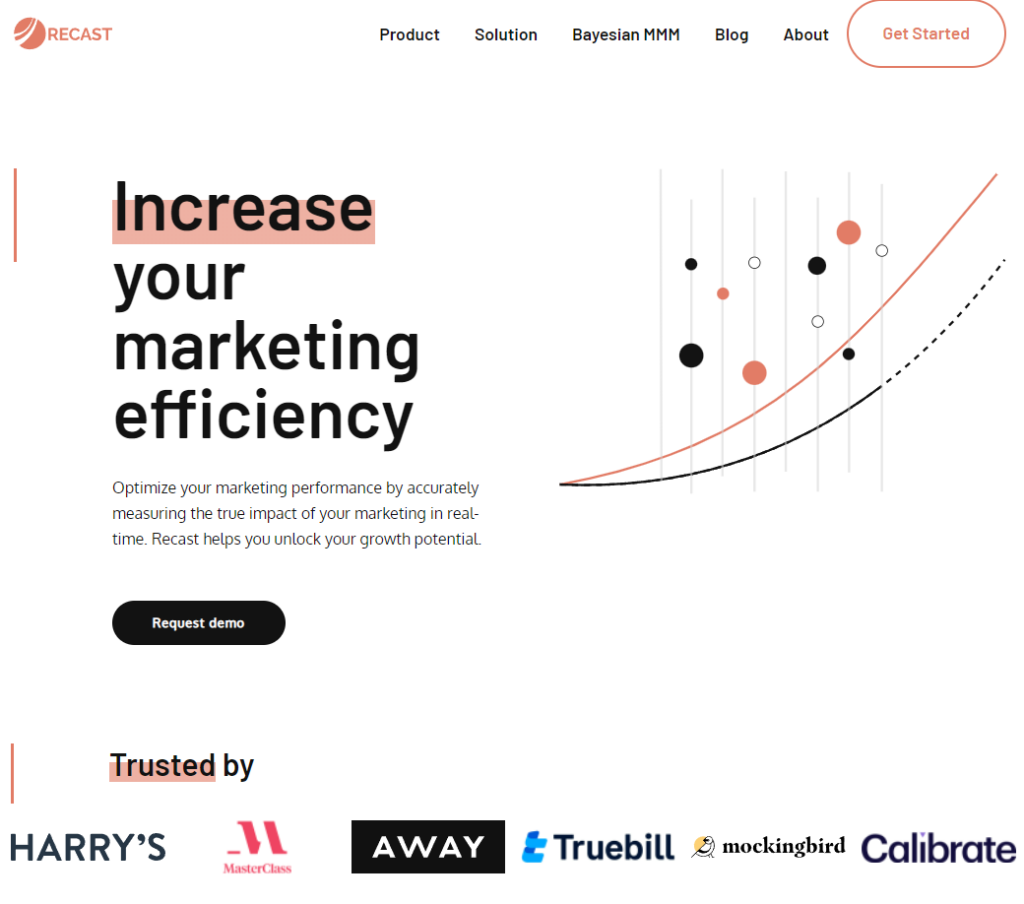
Known for:
Recast uses Bayesian methods which offers more flexibility in incorporating insights from other attribution methods, ensuring realistic results. The tool is fully automated after onboarding with modern data pipelines, and channel performance is dynamic over time (uncommon in MMM).
Compare with:
Robyn, Facebook/Meta’s open-source library for marketing mix modeling. It’s not as flexible compared to Recast’s offering and needs a data scientist to operate it, but otherwise it’s free.
2. Causal Inference
This method or collection of methods made the news recently after winning the nobel prize, and it can be highly effective when the conditions are right. It works by emulating the conditions of a controlled experiment using tactics like regression discontinuity, control variables and naturally occuring experiments. This is an advanced technique that needs a data scientist at the helm.
Incrmntal (incrmntal.com)
This tool helps productize what is normally a sophisticated technique to help advertisers understand the causality behind their marketing activities. Like Marketing Mix Modeling, it doesn’t need user-level data. The platform has multiple connectors to automate data collection and several helpful features for drilling down into spikes, dips and other anomalies.

Known for:
Working with the beleaguered mobile app industry to recover lost insights after Apple released iOS14 and broke user-level tracking. They also have a library of interesting use cases like “diamond in the rough”, or “tracking the untrackable”.
Compare with:
If you’re looking for an open source alternative and have data science resource to spare, there are multiple libraries available in Python and R, the most popular of which is CausalInference.
3. Competitor Activity
Often competitor activity has a bigger impact on your sales than your own marketing, particularly if you’re relatively smaller than the industry leader. This data is usually fiercely protected but there are tools out there that can approximate relative changes in website traffic, marketing spend, and search engine rankings, which can be used in your attribution modeling.
SimilarWeb (similarweb.com)
The largest and most reliable source of relative website traffic is SimilarWeb. They combine data from multiple sources including direct verification, chrome extensions, public sources, and buying data on 3rd-party brokerages.
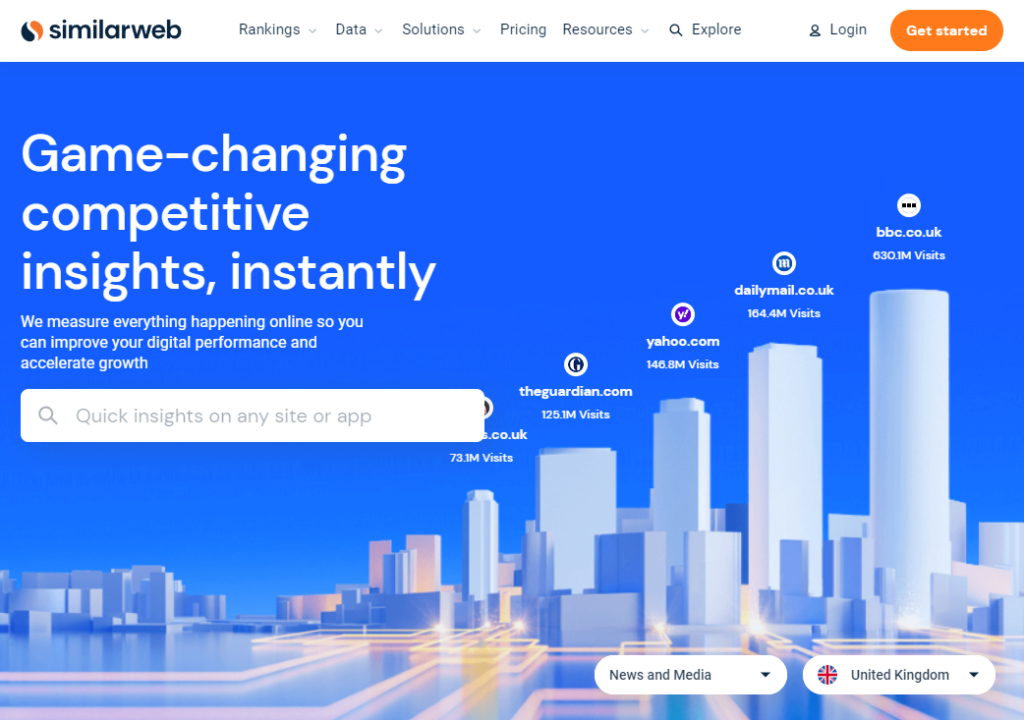
Known for:
They have the largest data set at 10m websites and 2TB of data analyzed daily. They employ over 200 data scientists to clean, synthesize and model these various sources together into a coherent index. They provide this as a generous free tool and charge for API access.
Compare with:
The tried and trusted solution most people fall back on is Google Search trends. This data is freely available and usually a good proxy for competitor activity. Although it is indexed to 100 so it’s not as flexible as it would be with absolute values.
4. Behavior-Based Attribution
If you don’t want to wait weeks or months for campaign performance to prove out, modern machine learning algorithms can predict future value from current behavior. Models tend to be relatively custom and advanced, and if you don’t have good website tracking set up it will be a case of garbage in, garbage out.
Rockerbox (rockerbox.com)
Rockerbox is an advanced conversion modeling platform that provides marketers the ability to build their own custom attribution models. Rockerbox is hyper-specialized in tracking people across the internet to see which ads they clicked on or viewed before purchasing on an e-commerce site.

Known for:
Rockerbox has its own first party pixel to collect advanced events, which makes it easier to set up your own custom attribution models. They’re positioned well to aid the transition to a ‘cookie-less world’ and can aid marketers in making decisions based on limited data.
Compare with:
Google Analytics 4 has automatic data collection functionality, and a data-driven attribution model which you can use for free. It also allows you to export data to BigQuery to build your own model if preferred. There are other vendors in the space like Segment Stream to evaluate as well.
5. Device Tracking
There are multiple terms and techniques used here, and some of them are more loaded than others given the arms race against Apple who officially banned fingerprinting and deprecated the IDFA (unique device identifier). Most vendors use a mix of referrer, device ID (when opted in), probabilistic modeling, and Apple’s SKAdNetwork to approximate a best guess at where a user came from, with accuracy on Android and other non-Apple networks being much higher.
AppsFlyer (appsflyer.com)
The de-facto leader in the attribution space pre-iOS14, they have also been the most aggressive since the transition, moving quickly to identify, implement and integrate new techniques in a fast-paced industry. With the rules changing regularly and as an increasingly complex regulatory environment develops, the industry leader is the safest option.
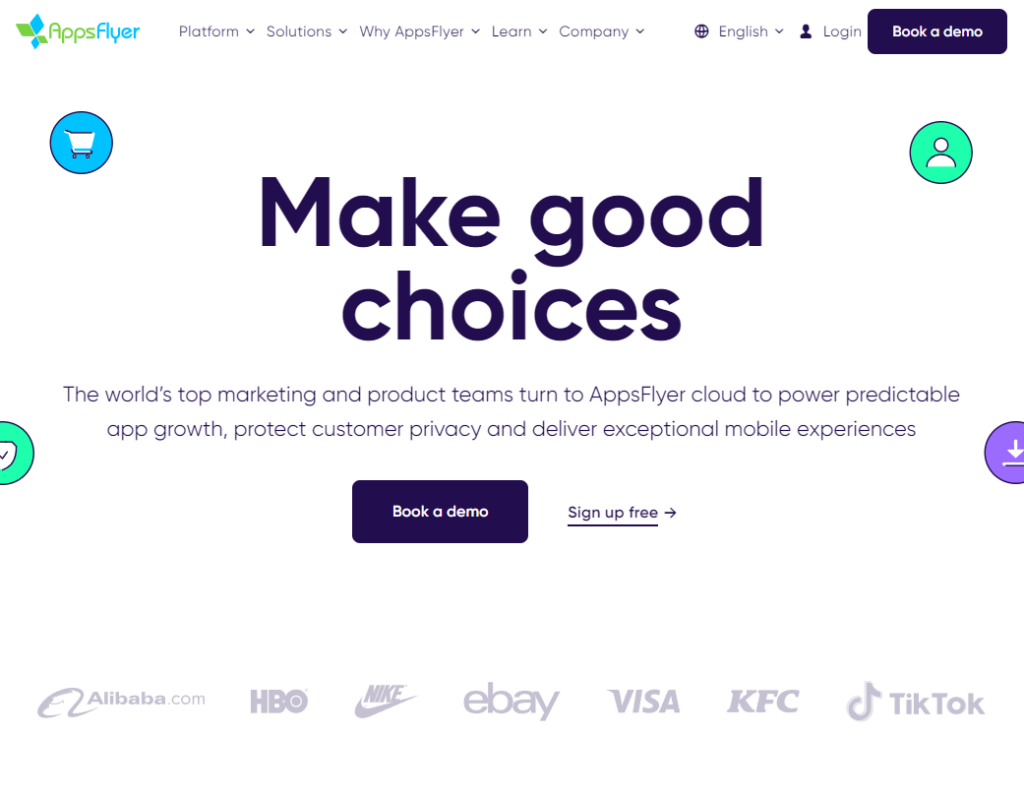
Known for:
The company has 60% market share with 89,000 clients, managing over $28b in ad spend per year. They got this dominant lead initially by being the best solution for media buyers, whereas competitors focused on deep linking and product teams.
Compare with:
One solution that is regularly mentioned in the same breath as AppsFlyer is Branch. Their use case initially was enabling app deep linking and cross platform user journeys, though now they offer a similar feature set to AppsFlyer, who also expanded into Branch’s territory.
6. Server-Side Tracking
One response to ad-blocking and tracking restrictions is to move tracking to where it’s harder to block. The move to server-side tracking was already well underway due to the shift to mobile apps (there is no ‘client’ browser with mobile apps, so it’s all ‘server-side’). Now the pace has quickened, particularly for products that rely on cross-device activity like subscriptions.
Segment (segment.com)
Early to the Customer Data Platform trend, Segment built a following through their open-source library initially before expanding to more complex server-side data connectors. They allow flexibility with your data, pulling it from and pushing it to almost any platform imaginable.

Known for:
The great UX around toggling integrations on / off with one click. Install your tracking once on your website and app, and then setting up new destinations can be done with no further code.
Compare with:
The (mostly) free option here is Google Tag Manager, which released a server side version that works in conjunction with their Google Cloud platform (you just pay for hosting the server). This can allow more flexibility than using an off the shelf tool, but also requires more setup.
7. A/B Testing
Marketing attribution isn’t just about what ads made money, but what actions, which is why conversion optimization should be a staple in every marketers attribution stack. Making changes to the website in a drag and drop interface can rapidly impact return on marketing investment.
Google Optimize (optimize.google.com)
What was once a lucrative niche had all of the profit vacuumed up by Google’s free Optimize product. With direct integrations to Google Analytics and Google Tag Manager (two other profit-destroying Google products) this is the default option for most websites.
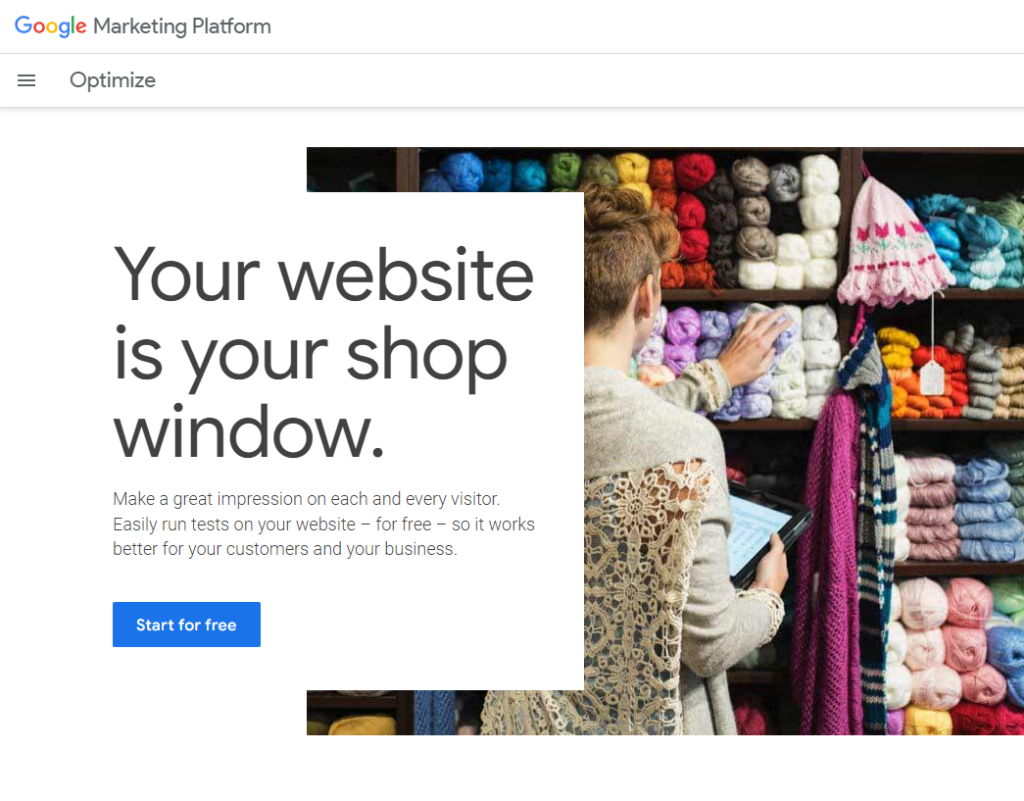
Known for:
The tool is free, which most vendors are unable to compete with unless they’re targeting the enterprise who need more sophisticated features (though of course Optimize is integrated into Google360). The drag and drop point and click interface makes setting up A/B tests easy.
Compare with:
Visual website optimizer was a rising star in the industry before Google entered the market, and have held their own by innovating on features and thought leadership. Switching to a more flexible and intuitive Bayesian system has made it the clear preference for serious A/B testers.
8. HDYHAU Surveys
Sometimes the best way to figure out what influenced your customers to buy is to just ask them! HDYHAU or “How Did You Hear About Us” surveys are particularly simple and effective, especially when added after checkout or registration
EnquireLabs (enquirelabs.com)
Especially if you’re a Shopify merchant, Enquire is a great option for any form of attribution survey. It provides a programmable timeline of questions, allowing you to constantly collect zero-party data to your stack to solve marketing attribution, automate personalization, route CRO opportunities, and more.
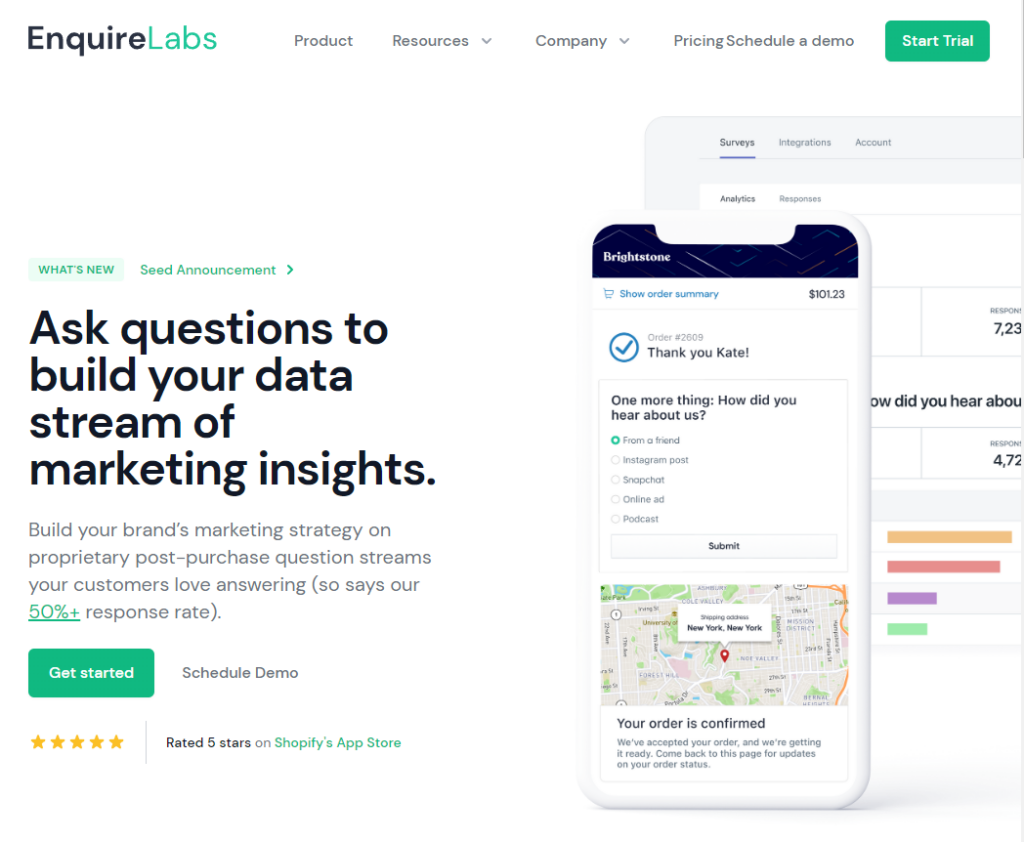
Known for:
EnquireLabs gets an industry beating 50% response rate on questions, which makes a big difference to being able to accurately track performance. They also have comprehensive documentation and a question bank full of best practices.
Compare with:
Although not specifically a checkout survey tool, HotJar has survey capability and is relatively simple to set up and use, as well as inexpensive, if less flexible.



